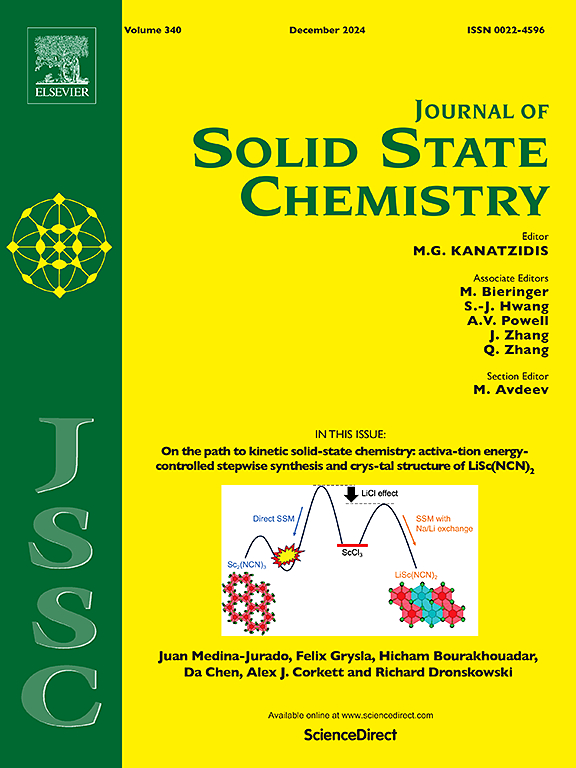Rb and Cl co-doped CsPbBr3 QDs for bright blue light emitting diode
IF 3.2
3区 化学
Q2 CHEMISTRY, INORGANIC & NUCLEAR
引用次数: 0
Abstract
In this study, Rb ion and Cl ion co-doping were employed to prepare Rb0.5Cs0.5PbCl1.5Br1.5 QDs, achieving high PLQY with deep blue emission. The doping of A-site cation Rb+ induces distortion of [PbX6]4- octahedra, leading to a more stable crystal structure, suppressing defect formation, and enhancing resistance to external environments. Simultaneously, Cl− doping at the halogen site allows for tuning of the emission spectrum, resulting in deep blue emission at ∼460 nm. The final blue quantum dots (Rb0.5Cs0.5PbCl1.5Br1.5 QDs) exhibit a PLQY of 61.90 %, a significant improvement compared to the undoped CsPbCl1.5Br1.5 QDs (27.12 %). By encapsulating QDs with hydrophobic polymer PCL, this encapsulation process isolates the QDs from the surrounding environment, significantly enhancing their stability. After placing Rb0.5Cs0.5PbCl1.5Br1.5/PCL in water for a period of time, the PL intensity remains almost unchanged. These quantum dots were then coated onto a commercial 365 nm GaN LED chip to create a blue LED, with color coordinates of (0.1428, 0.0522). The strategy proposed in this paper holds great promise for various potential applications in blue LEDs and backlight displays.

求助全文
约1分钟内获得全文
求助全文
来源期刊

Journal of Solid State Chemistry
化学-无机化学与核化学
CiteScore
6.00
自引率
9.10%
发文量
848
审稿时长
25 days
期刊介绍:
Covering major developments in the field of solid state chemistry and related areas such as ceramics and amorphous materials, the Journal of Solid State Chemistry features studies of chemical, structural, thermodynamic, electronic, magnetic, and optical properties and processes in solids.
 求助内容:
求助内容: 应助结果提醒方式:
应助结果提醒方式:


